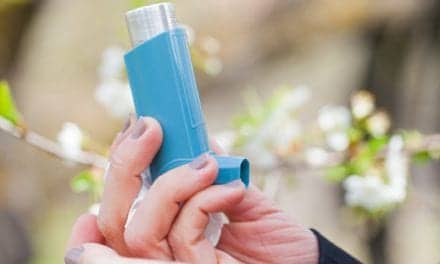A multidisciplinary ventilator weaning protocol was designed to decrease postoperative ventilator time, ICU length of stay, and patient care costs, while maintaining a high quality of care.

Children’s Hospital Medical Center (CHMC) is a 330-bed facility located in the heart of Cincinnati. In June 1999, the Heart Center and cardiac ICU instituted a multidisciplinary ventilator weaning protocol designed to decrease postoperative ventilator time, ICU length of stay, and patient care costs, while maintaining a high quality of care with no adverse events. The multidisciplinary group involved in designing this protocol included cardiac intensivists, anesthesiologists, nurses, respiratory therapists, and representatives from the Health Policy and Clinical Effectiveness Division. Literature was reviewed to evaluate current practices associated with ventilator weaning protocols. This evidence was utilized to develop the protocol that has been in effect for more than 18 months.
Weaning Protocol
When patients are admitted to the cardiac ICU, their ventilator regime is standardized. Intubated patients receive a tidal volume of 10-20 cc/kg (based on age), a set ventilator rate of 20-24 breaths per minute (BPM), positive end-expiratory pressure (PEEP) of 4 cm H2O, and an Fio2 of 50%. Those patients experiencing high peak inspiratory pressures (>30 cm H2O) are reevaluated and sometimes weaned using pressure control with synchronized intermittent mandatory ventilation. Each patient is also monitored using etco2 and pulse oximetry. Heart rate, respiratory rate, and right or left atrial pressures are monitored as well.
FIGURE 1. Initiating mechanical ventilation.
During the admission process, patients have their blood gases determined along with routine laboratory tests (complete blood count, electrolyte, and kidney function). If the blood gas analysis and etco2 monitor correlate well with each other, nearly all weaning will be done based on etco2 values alone (Figure 1). As a result, only four or less blood gas analyses will be done during the patient’s time on the ventilator. If there is poor correlation with the etco2 monitor, weaning will be performed based on blood gas values.
Ventilator changes may occur as often as every 15 minutes. The ventilator rate is weaned based on etco2/Pco2 values. If the patient requires a dose of narcotics or benzodiazepines, weaning is delayed for 30 minutes.
When patients’ ventilator rates have reached a set rate of 6-10 BPM and they are able to breathe spontaneously with the aid of pressure support, they are assessed for extubation. Blood gases and negative inspiratory force are determined and patients are placed on a non-self-inflating bag to assess respiratory rate and effort. If patients demonstrate good respiratory rate and effort with acceptable blood gases, they are extubated and oxygen is applied by nasal cannula.
Methods
Between July 1, 1999, and June 30, 2000, 440 patients were admitted to the cardiac ICU. Approximately 325 underwent palliative or reparative cardiac surgery, with 62 of these patients being extubated in the operating room. There were 53 patients who were eligible for entry into our ventilator weaning protocol. Eligibility was determined by age (older than 3 months, no history of bronchospasm/asthma, and hemodynamic stability).
Results
The mean age of patients weaned using the protocol was 6.3 years. A historical control group was comprised of 25 patients with a mean age of 3.2 years who met eligibility criteria and were admitted during the 6-month period prior to implementing the weaning protocol. Duration of mechanical ventilation decreased significantly from 13.6 hours to 7.6 hours, P<0.001. The average length of stay in the cardiac ICU decreased from 2.3 days to 1.9 days. The median stay was also reduced from 2 days to 1 day. Average hospital length of time decreased slightly from 4.7 to 4.5 days with the median stay remaining at 4 days. This has resulted in an estimated reduction in hospital charges of $112,000. Only one patient weaned by protocol required reintubation, which was attributed to unrecognized hemiparalysis of the diaphragm. Patients extubated using the protocol have had no adverse events.
Discussion
The findings of this study suggest that utilizing a ventilator weaning protocol decreased duration of mechanical ventilation and shortened ICU and hospital length of stay following pediatric cardiac surgery. The protocol required many changes in practice including major changes in the operating room. Traditionally, patients who underwent operative procedures received inhaled gas anesthesia combined with high doses of narcotics. Many patients now receive regional anesthesia, low-dose narcotics combined with gas anesthesia, or IV narcotics combined with propofol to minimize respiratory depression and reduce the need for mechanical ventilation.
Ventilator weaning has been traditionally directed by the physician. The protocol was ordered by the physician but directed by the nurse and respiratory therapist. Using ventilator weaning guidelines, the bedside caregivers made decisions about the frequency and appropriateness of weaning for their patients.
Utilizing the ventilator weaning protocol also reduced hospital costs and charges. Davis and colleagues9 have suggested that the largest use of resources occurs during mechanical ventilation following surgical repair of cardiac defects in children. Mechanical ventilation requires ICU management as well as additional nursing coverage, respiratory therapy staffing, mechanical ventilators (including disposable supplies), and blood gas analyses.
In addition to reduced ventilator, ICU, and hospital time, other benefits of weaning protocols have been observed. Parent surveys have indicated increased anxiety when their children were intubated. Additionally, children may experience an increase in fright and discomfort during this time. Limiting time on the ventilator can reduce feelings of anxiety to a shorter interval, resulting in increased patient and family satisfaction.
Conclusion
The patient population utilized for the weaning protocol was appropriate. Postsurgical patients typically require mechanical ventilation to aid in recovering from anesthesia. Conversely, patients in a medical ICU may require mechanical ventilation for multiple reasons including cardiorespiratory insufficiency due to lung disease. These patients frequently experience a prolonged course of mechanical ventilation.
In our patient population, there were four patients who had a prolonged stay in the hospital. Three of these patients required treatment for persistent pleural effusions, while the other was treated for a paralyzed right hemidiaphragm. Consequently, their stay in the hospital elevated the average hospital length of stay. None of these complications were attributed to utilizing a standardized ventilator weaning protocol.
We conclude that a standardized ventilator weaning protocol facilitates earlier extubation of children following cardiac surgery. Furthermore, earlier extubation can shorten intensive care and hospital length of stay. More cost-effective care and greater family satisfaction may also be achieved for pediatric patients.
Jenni L. Raake, RRT, is cardiac ICU coordinator for respiratory care; Karen Uzark, PhD, RN, is director of cardiac process improvement and outcomes research and a pediatric nurse practitioner; and Steven M. Schwartz, MD, is codirector of the cardiac ICU, all at the Children’s Hospital Medical Center, Cincinnati.
References
1. Kenebel AR. Ventilator weaning protocols and technique: getting the job done. AACN Clinical Issues. 1996;7:550-559.
2. Krachman S. Initiating weaning: appropriate measures promote successful extubation. Advance for Managers of Respiratory Care. 1999;44:24-25.
3. Marini JJ. Weaning techniques and protocols. Resp Care. 1995;40:233-237.
4. Ely EW, Bennett PA, Bowton DL, Murphy SM, Florance AM, Haponik EF. Large scale implementation of a respiratory therapist-driven protocol for ventilator weaning. Am J Respir Crit Care Med. 1999;159:439-446.
5. Horst HM, Mouro D, Hall-Jenssens RA, Pamukov N. Decrease in ventilation time with a standardized weaning process. Arch Surg. 1998;133:483-499.
6. Kollef MH, Shapiro SD, Silver P, et al. A randomized, controlled trial of a protocol-directed versus physician-directed weaning from mechanical ventilation. Crit Care Med. 1997;25:567-574.
7. Saura P, Blanch L, Mestre J, et al. Clinical consequences of the implementation of a weaning protocol. Intensive Care Med. 1996;22:1052-1056.
8. Wood G, MacLeod B, Moffatt S. Weaning from mechanical ventilation: physician-directed vs a respiratory-therapist-directed protocol. Resp Care. 1995;40:219-224.
9. Davis JT, Allen HD, Cohen DM. Fiscal impact of a practice pattern for secundum atrial septal defect repair in children. Am J Cardiol. 1994;74:512-514.











